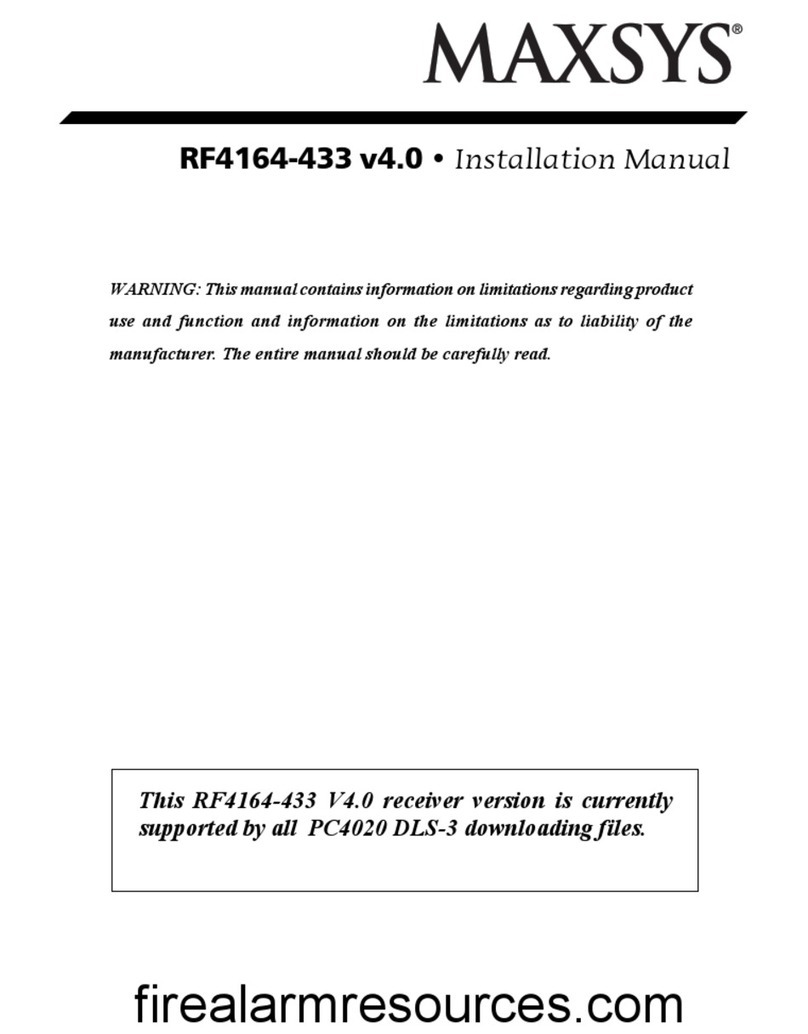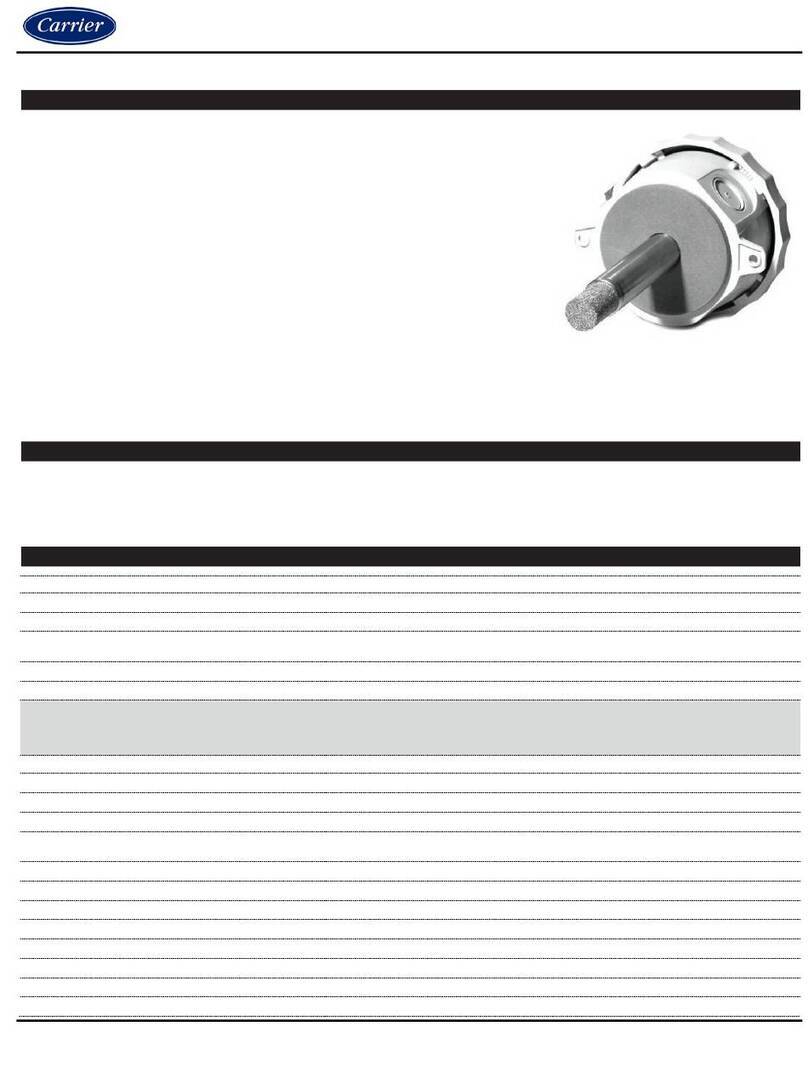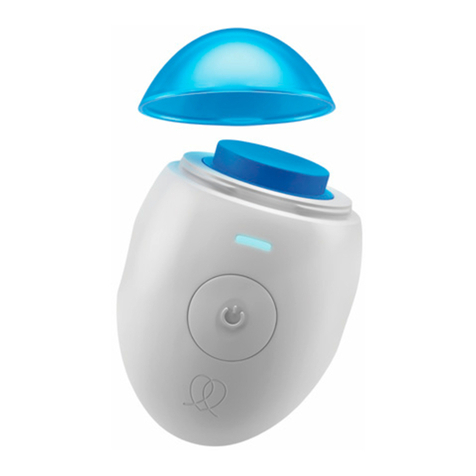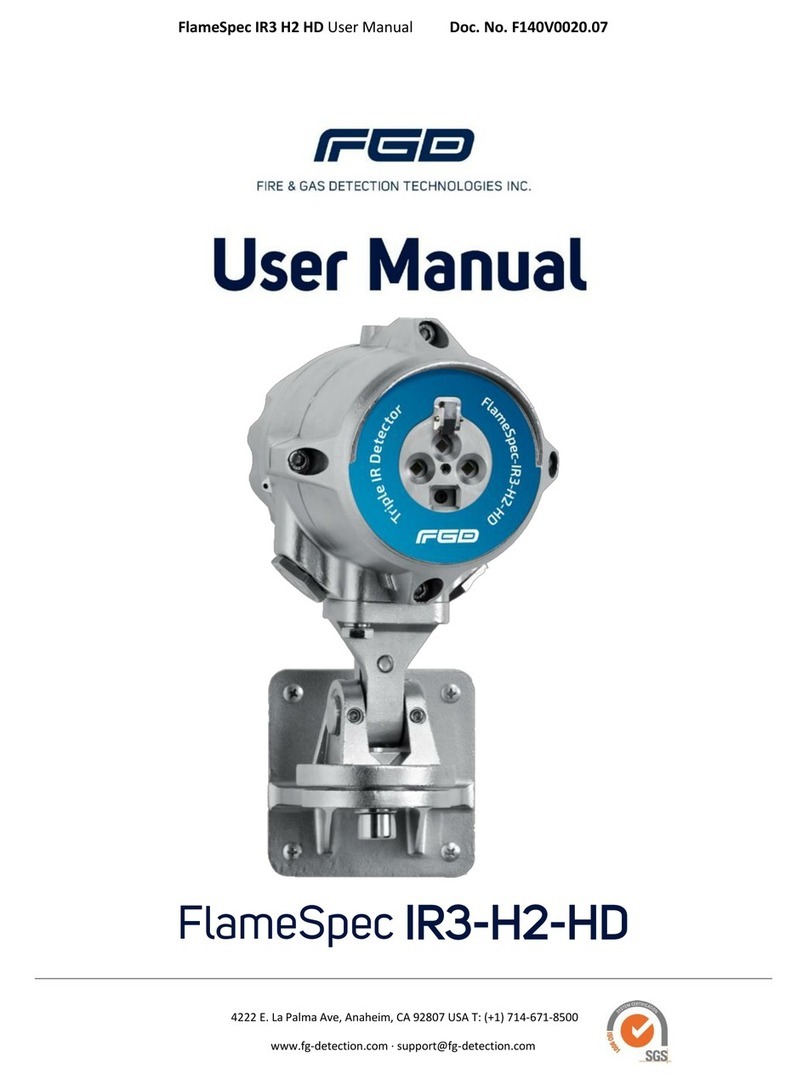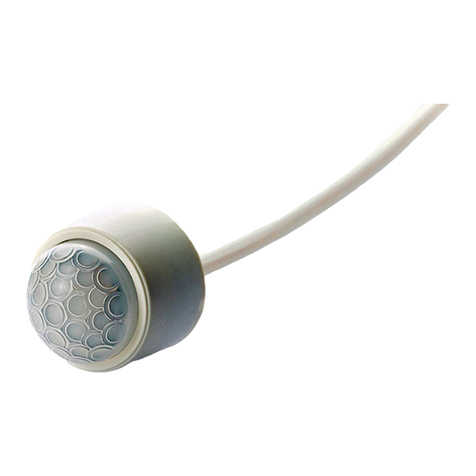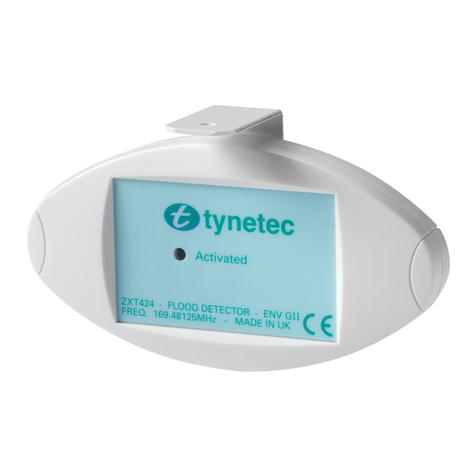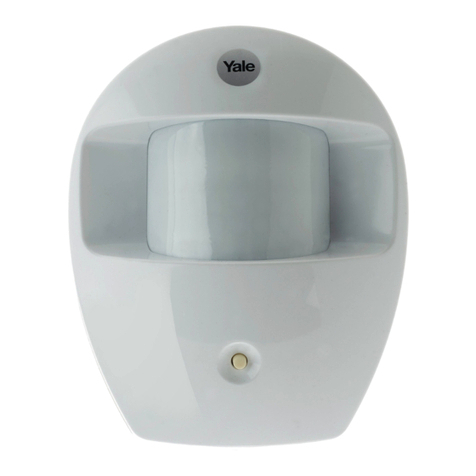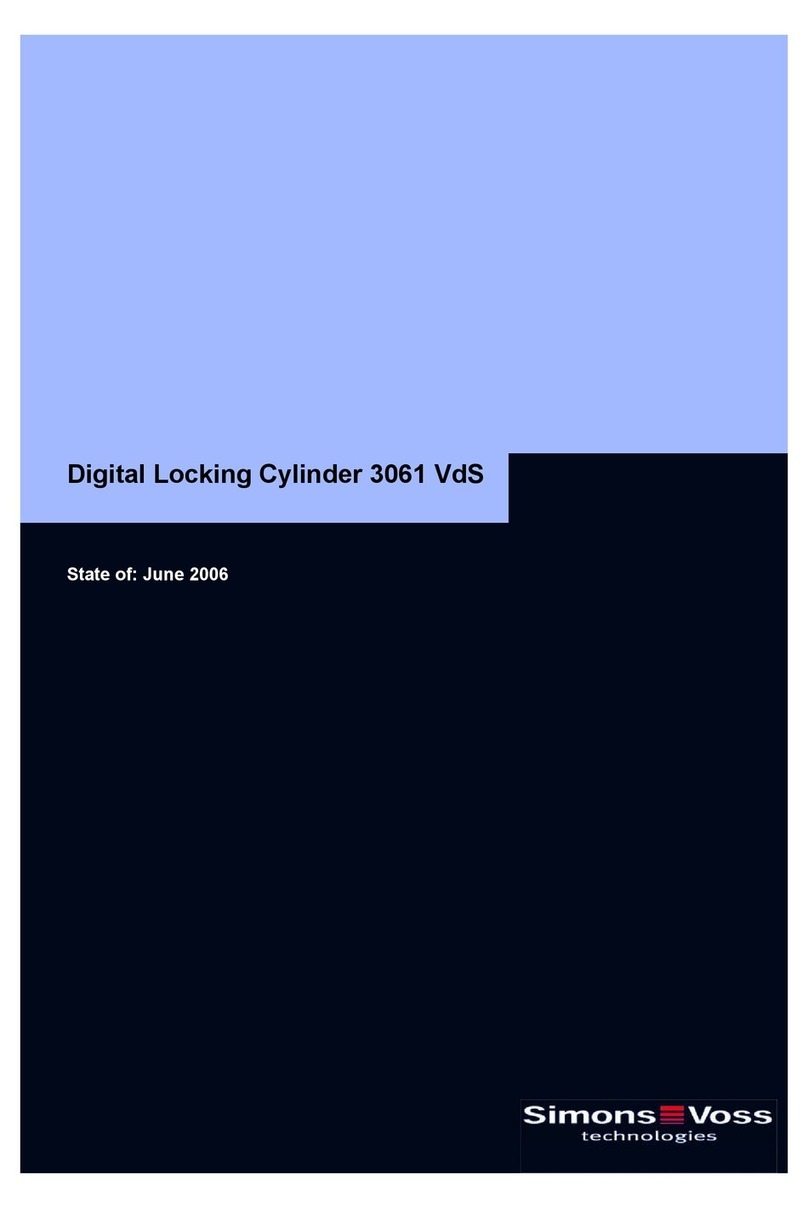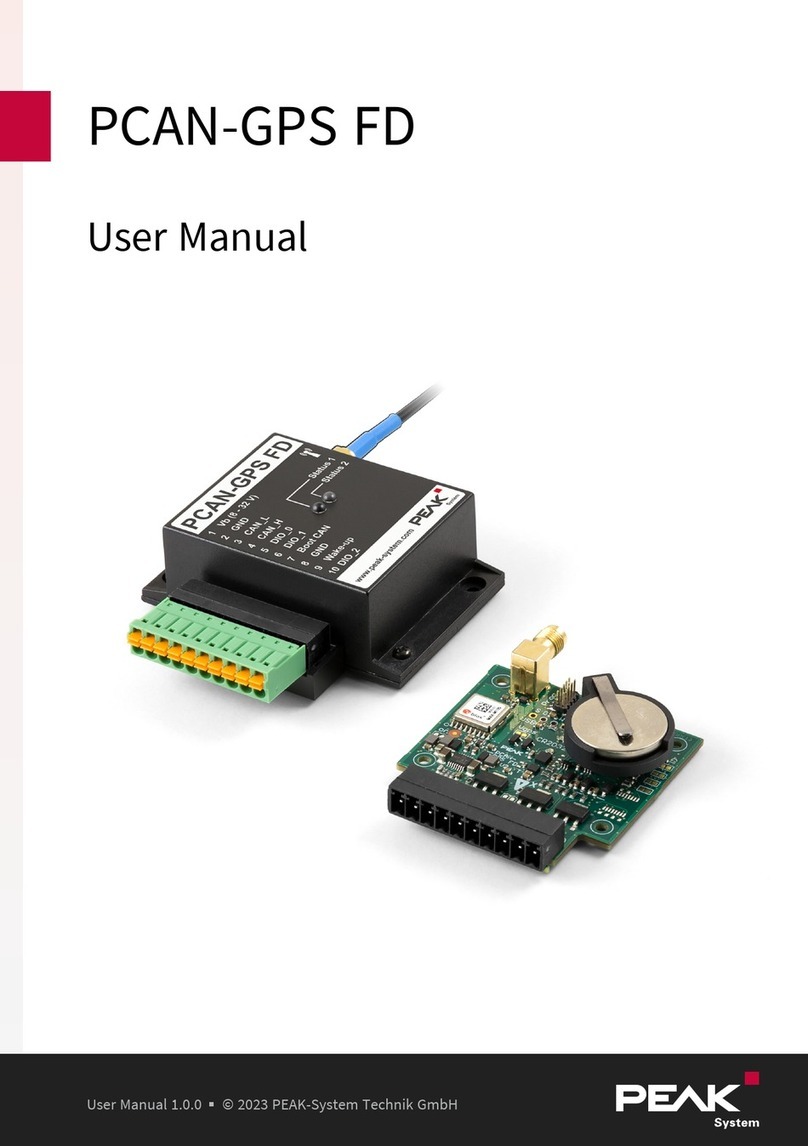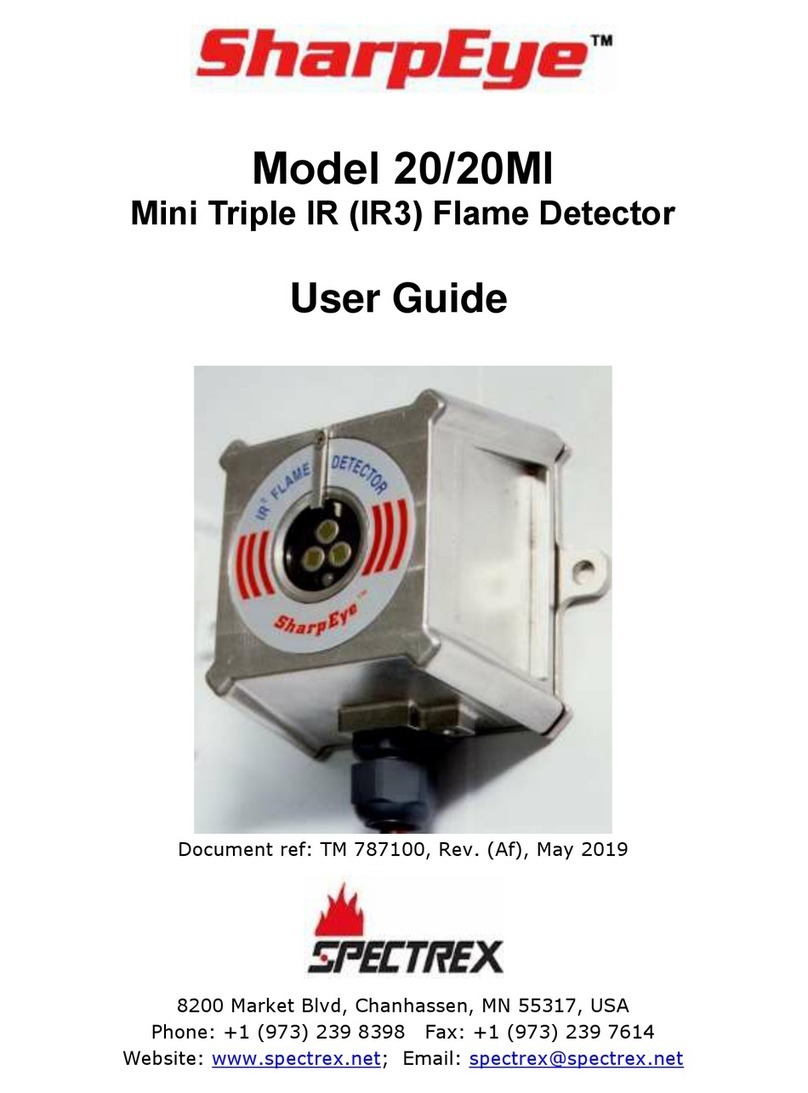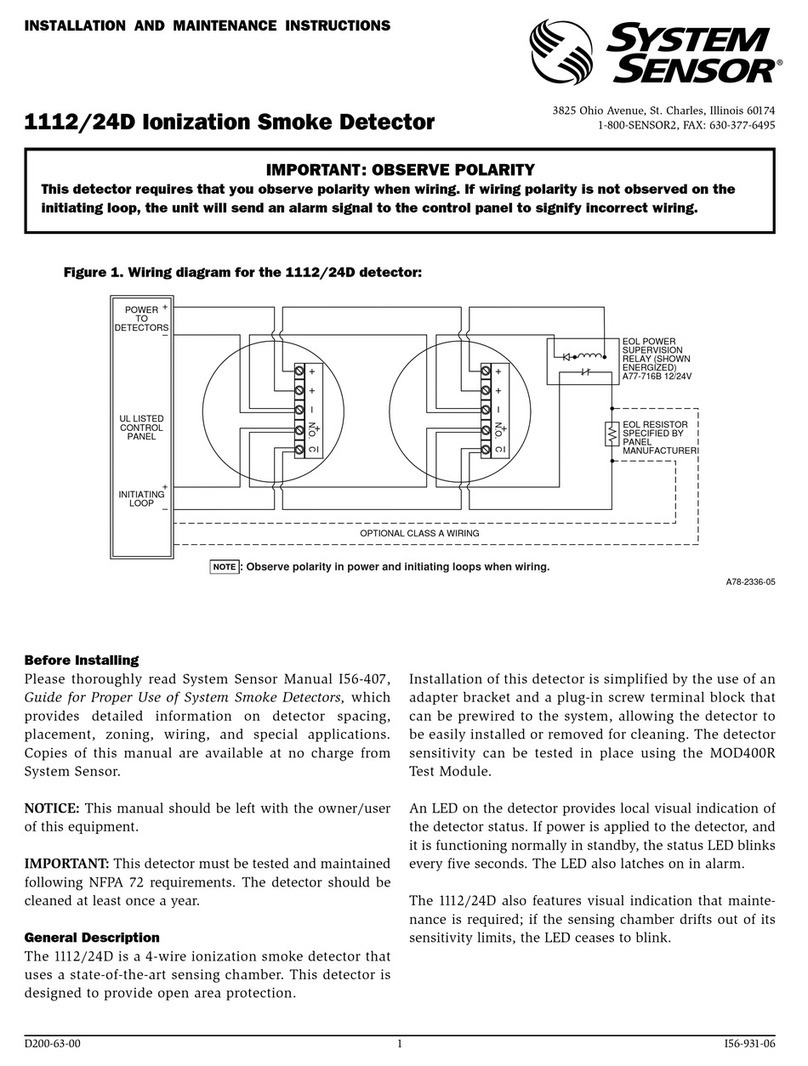Surface Concept Delayline DLD 8080 User manual

DLD8080 R4.30 & R4.31 Manual
Delayline Detector
DLD8080
(Release 4.30 & 4.31)
Manual

2DLD8080 R4.30 & R4.31 Manual | Surface Concept GmbH
Surface Concept GmbH
Am Sägewerk 23a
55124 Mainz
Germany
phone: +49 6131 62716 0
fax: +49 6131 62716 29
email: info@surface-concept.de
web: www.surface-concept.de
All rights reserved. No part of this manual may
be reproduced without the prior permission
of Surface Concept GmbH.
Delayline Detector DLD8080
Release: R4.30 & R4.31
Manual Version 2.2
Printed on 2019-08-16

3
DLD8080 R4.30 & R4.31 Manual
1 Table of Contents
1 Table of Contents ................................................................................................................................................3
2 Introduction..........................................................................................................................................................6
2.1 General Information....................................................................................................................................6
2.2 Safety Instructions .......................................................................................................................................6
2.3 General Overview of the System............................................................................................................ 7
3 Installation............................................................................................................................................................. 8
3.1 Initial Inspection............................................................................................................................................... 8
3.2 Installation .......................................................................................................................................................... 8
3.2.1 Mounting of the Delayline Detector..........................................................................................8
3.2.2 Detector Orientation.......................................................................................................................9
3.2.3 Cabling and High Voltage..............................................................................................................9
3.2.4 Software Interface and Installation......................................................................................... 11
4 Operation of the DLD......................................................................................................................................12
4.1 “Start Up“ Procedure for First Time Operation.................................................................................12
4.1.1 “Start Up“ Procedure..................................................................................................................... 12
4.1.2 Dark Count Rate Measurement................................................................................................ 14
4.1.3 Standard DLD Operation ............................................................................................................ 14
4.2 Standard Operation Procedure.............................................................................................................15
4.2.1 Operation with MCP Front Side terminated to GROUND ............................................... 15
4.2.2 Operation of the Detector with the MCP Front Side connected to a Reference Voltage16
4.3 Bake Out Procedure.................................................................................................................................. 18
5 DLD - Principle of Operation.........................................................................................................................19
5.1 Basics of Delayline Detection................................................................................................................ 19
5.2 Basic Operational Modes of the Delayline Detector .................................................................... 20
5.2.1 2D(x, y) Area Detection................................................................................................................ 20
5.2.2 3D(x, y, t) Time Resolved Imaging............................................................................................ 20
5.3 Data Acquisition ........................................................................................................................................ 21
5.4 Working with the DLD - Important Details ...................................................................................... 21
5.5 MCP Outgassing during Operation .................................................................................................... 23
DLD8080 R4.30 & R4.31 Manual | Surface Concept GmbH

4
6 Delayline Detector Layout.............................................................................................................................24
6.1 Delayline Detector - Vacuum Wiring .................................................................................................. 24
6.2 Delayline Detector - Connection Ports.............................................................................................. 25
7 Pulse Processing Electronics.........................................................................................................................26
7.1 Pulse Processing Electronics ACU 3.4.2............................................................................................. 26
7.1.1 Positions of the Discriminator Threshold Regulators ....................................................... 27
8 Micro Channel Plate (MCP)............................................................................................................................28
8.1 Specications.............................................................................................................................................. 28
8.2 Storage.......................................................................................................................................................... 28
8.3 Handling....................................................................................................................................................... 28
8.4 Operation..................................................................................................................................................... 29
8.5 MCP Lifetime and Operation Voltage ................................................................................................ 29
8.6 MCP Degase Procedure........................................................................................................................... 32
8.7 Replacement............................................................................................................................................... 32
9 Troubleshooting................................................................................................................................................33
10 Technical Data .................................................................................................................................................34
11 List of Figure.....................................................................................................................................................35
DLD8080 R4.30 & R4.31 Manual | Surface Concept GmbH

5
DLD8080 R4.30 & R4.31 Manual
DLD8080 R4.30 & R4.31 Manual | Surface Concept GmbH

6
2 Introduction
2.1 General Information
This manual is intended to assist users in the installation, operation and maintenance of Release Version
4.30 & 4.31 of the Delayline Detectors DLD8080. It is divided into 11 chapters. The chapter “Introduction”
contains a brief description of the DLD. The chapter “Installation” refers to installation and cabling, while
the chapter “Principle of Operation” explains the theory of operation of the DLD. 3 chapters describe
the technical details of the detector readout package and chapter “Operation of the DLD” describes the
operation of the DLD. The nal chapters contain among others technical details about the microchannel
plates and the Delayline Detector in general.
2.2 Safety Instructions
Pleasereadthismanualcarefullybeforeperforminganyelectrical or electronicoperations
and strictly follow the safety rules given within this manual.
The following symbols appear throughout the manual:
Note
The“note symbol”marks text passages, which contain important information/hints about
the operation of the detector. Follow these information to ensure a proper functioning
of the detector.
The “caution symbol” marks warnings, which are given to prevent an accidentally
damaging of the detector or the readout system. Do NOT ignore these warnings and
follow them strictly. Otherwise no guarantee is given for arose damages.
The “high voltage symbol” marks warnings, given in conjunction with the description of
the operation/use of high voltage supplies and/ or high voltage conducting parts.
Hazardous voltages are present, which can cause serious or fatal injuries. Therefore
only persons with the appropriate training are allowed to carry out the installation,
adjustment and repair work.
DLD8080 R4.30 & R4.31 Manual | Surface Concept GmbH

7
DLD8080 R4.30 & R4.31 Manual
2.3 General Overview of the System
The Surface Concept Delayline Detectors are particularly developed for the needs of 1D(x), 2D(x,t), 2D(x,y)
or 3D(x,y,t) area and time detection of electrons, ions, x-ray and UV-light.
The DLD8080 R4.30 & R4.31 are mounted on a CF160 vacuum ange with feedthroughs for high voltage
supply and signal transfer. They consist of a microchannel plate stack and two layers (x, y) of meander
structured delaylines. The image is sampled by the DLD readout electronics.
The 3D (x, y, t) detection bases on the measurement of time dierences and time sums of signals, with a
high temporal resolution in one device. The count rate can reach several MHz in the commonly used 4-fold
coincidence measurement.
Typical applications are:
• imaging of parallel incident particle beams, particularly electrons
• spatially resolved time of ight spectroscopy in 2D/time resolved mode
• time referenced imaging of electrons excited by repetitive driven sources
and in energy analyzers:
• Fermi surface mapping, band mapping, photoelectron diraction measurements, and similar angular
dispersion experiments in 2D mode
• XPS, UPS, ESCA and AES in virtual channel mode
• Stroboscopic experiments in 2D/time resolved mode
DLD8080 R4.30 & R4.31 Manual | Surface Concept GmbH

8
3 Installation
3.1 Initial Inspection
3.2 Installation
3.2.1 Mounting the Delayline Detector
Visual inspection of the system is required to ensure that no damage has occurred during shipping.
Should there be any signs of damage, please contact your provider immediately. Please check the delivery
according to the packing list (see Table 1) for completeness.
• Delayline Detector Unit (delivered in a vacuum container)
• Pulse Processing Unit ACU
• 1 x SHV Termination Plug
• 1 x DLD Readout Cable (HDMI) with Strain Relief
• CD with Documentation and Software
Table 1: Packing list for the DLD8080 R4.30 & R4.31 Detector.
The detector is transported under vacuum. Proceed as follows, to install the detector into your vacuum
chamber:
• Vent the transport container carefully and slowly (use N2 for venting if possible).
• Remove the transport container carefully.
• Before installing the detector to your chamber, check the front side of the MCP stack for particles.
The microchannel plates in front of the detector should be protected from exposure
to particle contamination. Particles that stick to the plate can be removed by carefully
using a single-hair brush carefully and/or with dry nitrogen. Reading the instructions
“microchannel plates” in Chapter 8 is strongly recommended.
• Install the detector into your vacuum chamber.
DLD8080 R4.30 & R4.31 Manual | Surface Concept GmbH

9
DLD8080 R4.30 & R4.31 Manual
• Keep the transport container in case that the detector must be sent back for repair. It can also be
used for storing the detector temporarily (not longer than one month) when not installed in a vacuum
chamber.
Note
The detector should be kept under vacuum all the time.
The best long term storage environment is an oil free vacuum in the 10E-2mbar range or
better.
The transport container is not designed for a long term storage of the detector. A storage
time of one month should not be exceeded.
The transport housing should be evacuated regularly with a period of at least one month,
in case that the transport housing must be used for a longer storage time.
3.2.2 Detector Orientation
The black dot in Figure 1 marks the 0/0 position of the DLD image which corresponds to the upper left
corner of the image in the GUI software.
Figure 1: 0/0 position of the DLD image (black dot).
Image 0/0 position
3.2.3 Cabling and High Voltage
• The general connection scheme of the Delayline Detector including its readout package is shown in
Figure 2.
DLD8080 R4.30 & R4.31 Manual | Surface Concept GmbH

10
Figure 2: Connection scheme of the Delayline Detector and readout package.
• The pulse processing unit ACU can be connected directly to the DLD 4-fold SMB feedthrough. The
metal pin gives the orientation. Fasten the ACU with the two clips on the housing.
• Use the DLD readout cable to connect the “Lines Out” socket on the front of the ACU with the “TDC
Input” socket at the rear panel of the TDC (see the TDC manual for the specic connection scheme of
the TDC).
• The CF160 base ange holds 1 CF40 ange with 3 SHV feedthroughs for the high voltage supply of the
detector named “MCP-F” , “MCP-B” and “U_DLD”. The naming can be found directly engraved on the
CF40 ange.“MCP-F”is the contact to the front side of the MCP stack,“MCP-B”is the contact to the back
side of the MCP stack and “U_DLD” is connected to the detector anode.
Be sure that all voltages are settled to zero before connecting the high voltage cables to
the detector, otherwise serious damage to the detector can occur due to high voltage
sparks.
• Use the SHV cables to connect the corresponding outputs of the high voltage power supply (“MCP-F”,
“MCP-B”, and “U_DLD”) to the corresponding feedthroughs of the detector.
DLD8080 R4.30 & R4.31 Manual | Surface Concept GmbH

11
DLD8080 R4.30 & R4.31 Manual
• Terminate the external reference input “HV Ref. In” of the high voltage power supply with the SHV
termination plug (part of the delivery). Later on also a reference voltage (e.g. the column potential in an
electron microscope or the Herzog potential in an electron spectrometer) can be applied to the front
side of the MCP stack of the detector as well as to the high voltage power supply (see the manual for
the high voltage power supply for more details).
Note
In cases that no reference voltage is applied to the MCP front, the termination plug must
be used to ground the MCP front. Otherwise the MCP stack is not functioning as the
reference potential is missing.
The exact operation voltage of the detector is given in the specication sheet. It is given
in reference to the“MCP-F” potential.
Note
HV power supplies always produce some noise level on the HV lines. An increased
noise level can lead to a signicant loss of spatial and time resolution. In such a case an
appropriate noise lter between the HV power supply and the DLD HV connectors is
highly recommended.
HV power supplies as part of the DLD delivery have been explicitly tested for the DLD
operation.
For the use with a customer HV supply there are noise lters available from Surface
Concept. They are not necessarily part of each detector delivery.
• Further information about detector operation voltages can be found in chapter 4.
• Install the hardware drivers and the GUI – DLD software. See the GUI – DLD Software Installation manual
for further details.
• Connect the power cable to the main connector of the TDC and use the USB cable to connect the TDC
to the PC. Do not use PC front panel USB connectors; they are often restricted in performance.
• To perform time measurements with respect to an external clock, provide start pulses to the start
input of the TDC. Use the corresponding BNC socket of the TDC (see the TDC manual for the specic
connection scheme of the TDC).
3.2.4 Software Interface and Installation
All operation functions for data readout of the detector package are encapsulated in a dynamic linked
library(either “delayline_gpx3.dll” or scTDC1.dll). Data processing and presentation on the PC is realized
by an enduser software (e.g. GUI). See the corresponding software manual for detailed information on the
software package and the DLL interface.
The delivery package of the delayline detector includes a CD-ROM with hardware drivers and the GUI
software. Insert the CD into your disk drive and install the software package as described in the DLD - GUI
Software Installation Manual.
Read-out of the delayline detector is done via the USB port of the TDC (time-to-digital-converter). The
specic PC system requirements can be found in the corresponding TDC manual.
DLD8080 R4.30 & R4.31 Manual | Surface Concept GmbH

12
4 Operation of the DLD
Mistakes, which lead to complete wrong measurement results, can happen very easily
while taking the detector to operation. Therefore it is strongly advised to read the
following sections completely before taking the detector to operation and to strictly
follow all given advices within it.
All operation voltages for the detector are given within the detectors specication sheet.
Due to gain degradation it will become necessary to increase the operation voltage from
time to time. Please refer to Chapter 8.5 for detailed information.
4.1 “Start Up”Procedure for First Time Operation
Note
4.1.1 “Start Up“ Procedure
Follow this procedure when taken the detector to operation the rst time and after every venting.
• Finish the complete cabling as described in Chapter 3 and as described in the manual of the HV Power
Supply.
• Turn on the TDC.
• Start your end-user software (e.g. GUI software) and within this software the rate meter, if available. For
details see your end-user software manual.
• Be sure, that the vacuum pressure at the detector is remarkably below 1E-6mbar, otherwise the micro
channel plates might be damaged by a local discharging (in general: the lower the pressure, the longer
the lifetime of the MCPs).
• Turn o all sources for electrons, ions, light or X-rays that might hit the detector.
Ion gauges and ion pump are both sources for electrons and ions. Ion pumps can also
be a source for X-rays. They can produce so many particles/X-rays that the detector is in
a complete overload, even when they are not facing the detector directly. This will wear
out the MCPs very fast. Turn o ion pumps and ion gauges before turning on the high
voltage of the detector.
• Turn on the high voltage carefully.The voltage increase should not exceed 400V per minute. A schematic
sketch on how to ramp the voltages during the “Start-Up” procedure is given in Figure 3. The starting
operation voltage is specied in the specication sheet of the detector.
• Watch the vacuum pressure while increasing the high voltage; turn the voltages back, if an unusual
increase is observed in the pressure (indicator for high voltage sparking).
DLD8080 R4.30 & R4.31 Manual | Surface Concept GmbH

13
DLD8080 R4.30 & R4.31 Manual
High voltage sparks may seriously damage the detector anode/meander or the MCPs.
Observe the chamber pressure carefully every time the high voltage is turned on. Switch
o the high voltage immediately in case of a temporary pressure rise by an order of
magnitude or more. This indicates high voltage sparking.
If sparking occurs, turn down the high voltage immediately and wait some time (up to 5
min.). Start the“Start-Up”procedure again with an increased ramp time. Turn o the high
voltage completely, stop the procedure and call your provider for further assistance, if is
it not possible to reach the operation voltage without sparking.
Figure 3: Schematic sketch on voltage ramping during“Start-Up”procedure.
The detector starting operation voltage for “MCP-B” is given in the specication sheet.
The voltage for “U_DLD” should be kept xed at + 400V in relation to“MCP-B” .
The voltage for “MCP-B” is always given in reference to the MCP front voltage“MCP-F”.
(The Surface Concept HV Power Supply keeps the relation between “MCP-B” and “U_
DLD” xed at +400V automatically and the “MCP-F” voltage corresponds directly to the
external reference voltage of the HVPS. See the manual of the SC HVPS for further details).
Note
Example: Assume the following operation voltage for“MCP-B”: +1,900V in respect to“MCP-F”. A ramp time
of approx. 5 min. should be used to increase “MCP-B” to +1,900V (“MCP-F” + “MCP-B”). In parallel “U_DLD”
must be ramped to a voltage of +2,300V (“MCP-B” + 400V), always keeping a voltage dierence between
“MCP-B” and “U_DLD” of + 400V. always keeping a voltage dierence between “MCP-B” and “U_DLD” of +
400V and a voltage dierence between“MCP-F”and “MCP-B as specied in the specication sheet.
The analogue readout electronics have been adjusted to optimized detector voltages.
The starting operation voltages are given in the specication sheet of the detector.
Please note that one cannot compensate a voltage lower than the specied operation
voltages by increasing the intensity to the detector. This will only lead to complete false
measurement results.
DLD8080 R4.30 & R4.31 Manual | Surface Concept GmbH

14
4.1.2 Dark Count Rate Measurement
• Check the detector output by means of your end-user software (e.g. GUI software) after ramping to the
operation voltage (the use of the rate meter where available is recommended).
• The dark count rate without any source should be as given in the specication sheet.
• Accumulate the dark counts for several minutes (e.g. 15 minutes). The DLD image should appear
homogeneous and sharply bounded. See Figure 4 for an example (your specic DLD image can dier
in size, shape and segmentation).
Figure 4: Example for DLD image of accumulated dark counts.
4.1.3 Standard DLD Operation
• After nishing the dark count rate measurement with a satisfying result, you may now start carefully
with an electron or light source observing the detector output.
Keep in mind the description about the important operation details in Chapter 5.
Note
Turn o the high voltage, close the software and turn o the TDC before performing any
changes of the cabling.
DLD8080 R4.30 & R4.31 Manual | Surface Concept GmbH

15
DLD8080 R4.30 & R4.31 Manual
4.2 Standard Operation Procedure
4.2.1 Operation with MCP Front Side terminated to GROUND
Use this procedure later on for all operations when the detector has already been operated in vacuum
before and has not been vented in between.
• Finish the complete cabling as described in chapter 3 and as described in the manual of the HV Power
Supply.
• Connect the termination plug to the“MCP-F”connector to ground the front side of the MCP stack.
• Turn on the TDC.
• Start your end-user software (e.g. GUI software) and within this software the rate meter (if available).
For details see your end-user software manual.
• Be sure, that the vacuum pressure at the detector is remarkably below 1E-6mbar, otherwise the micro
channel plates might be damaged by a local discharging (in general: the lower the pressure, the longer
the lifetime of the MCPs).
• Turn o all sources for electrons, ions, light or X-rays that might hit the detector.
• Turn up the high voltage carefully and stepwise within a couple of minutes to the operation voltage.
The starting operation voltage is specied in the specication sheet of the detector.
• Watch the vacuum pressure while increasing the high voltage; turn the voltages back, if an unusual
increase is observed in the pressure (indicator for high voltage sparking).
High voltage sparks may seriously damage the detector anode/meander or the MCPs.
Observe the chamber pressure carefully every time the high voltage is turned on. Switch
o the high voltage immediately in case of a temporary pressure rise by an order of
magnitude or more. This indicates high voltage sparking.
If sparking occurs, turn down the high voltage immediately and wait some time (up to 5
min.). Start the“Start-Up”procedure again with an increased ramp time. Turn o the high
voltage completely, stop the procedure and call your provider for further assistance, if is
it not possible to reach the operation voltage without sparking.
• Check the detector output with your end-user software (e.g. GUI software) after ramping to the
operation voltage (the use of the rate meter is recommended).
• Now you may start carefully with an electron source observing the detector output.
Note
Keep in mind the description about the important operation details in Chapter 5.
Turn o the high voltage, close the software and turn o the TDC before performing any
changes of the cabling.
DLD8080 R4.30 & R4.31 Manual | Surface Concept GmbH

16
4.2.2 Operation of the Detector with the MCP Front Side connected to a Reference Voltage
Follow this procedure for all later operation starts, when operating the detector with the front side of
the MCP stack connected to an external high voltage potential
• Finish the complete cabling as described in Chapter 3 and as described in the manual of the Single HV
Supply.
• Connect the external reference voltage to the “MCP-F” connector. DO NOT APPLY ANY HIGH VOLTAGE
yet.
• Turn on the TDC.
• Start your end-user software (e.g. GUI software) and within this software the rate meter (if available).
For details see your end-user software manual.
• Be sure, that the vacuum pressure at the detector is remarkably below 1E-6 mbar, otherwise the micro
channel plates might be damaged by a local discharging (in general: the lower the pressure, the longer
the lifetime of the MCPs).
• Turn o all sources for electrons, ions, light or X-rays that might hit the detector.
• Increase the detector voltage for “MCP-B” to the specied operation voltage stepwise within a couple
of minutes.
• Turn o all sources for electrons, ions, light or X-rays that might hit the detector.
• Now increase the external reference voltage until reaching the desired voltage for“MCP-F”. (Important:
Respect the maximum reference voltage for “MCP-F”. It is given within the specication sheet.) The
voltage increase should not exceed 400V per minute, when operating the detector with an external
high voltage applied to “MCP-F” for the rst time. Otherwise turn up the high voltage carefully and
stepwise within a couple of minutes to the operation voltage.
• The voltage increase should not exceed 400V per minute, when operating the detector with an external
high voltage applied to “MCP-F” for the rst time. Otherwise turn up the high voltage carefully and
stepwise within a couple of minutes to the operation voltage.
• Increase the external reference voltage until reaching the desired voltage for “MCP-F”.
• Now turn up the the high voltage carefully and stepwise within a couple of minutes to the operation
voltage. The starting operation voltage is specied in the specication sheet of the detector.
• A schematic sketch on how to ramp the voltages is given in Figure 5.
• Watch the vacuum pressure while increasing the high voltage; turn the voltages back, if an unusual
increase is observed in the pressure (indicator for high voltage sparking).
High voltage sparks may seriously damage the detector anode/meander or the MCPs.
Observe the chamber pressure carefully every time the high voltage is turned on. Switch
o the high voltage immediately in case of a temporary pressure rise by an order of
magnitude or more. This indicates high voltage sparking.
If sparking occurs, turn down the high voltage immediately and wait some time (up to 5
min.). Start the“Start-Up”procedure again with an increased ramp time. Turn o the high
voltage completely, stop the procedure and call your provider for further assistance, if is
it not possible to reach the operation voltage without sparking.
DLD8080 R4.30 & R4.31 Manual | Surface Concept GmbH

17
DLD8080 R4.30 & R4.31 Manual
Figure 5: Schematic sketch on voltage ramping with external reference voltage.
Note
The detector starting operation voltage for “MCP-B” is given in the specication sheet.
The voltage for “U_DLD” should be kept xed at +400V in relation to“MCP-B” .
The voltage for “MCP-B” is always given in reference to the MCP front voltage“MCP-F”.
(The Surface Concept HV Power Supply keeps the relation between “MCP-B” and “U_
DLD” xed at +400V automatically and the “MCP-F” voltage corresponds directly to
the external reference voltage of the HVPS. See the manual of the SC HVPS for further
details).
Example: Assume the following operation voltage for “MCP-B”: +1,900V in respect to “MCP-F” and a
reference voltage for “MCP-F”of -500V. A ramp time of approx. 1.3min should be used to increase “MCP-F”
to -500V. Then a ramp time of 5 min. should be used to increase “MCP-B” to +1,400V (“MCP-F” + “MCP-B”).
In parallel “U_DLD” must be ramped to a voltage of +1,800V (“MCP-B” +400V), always keeping a voltage
dierence between“MCP-B”and “U_DLD” of +400V and a voltage dierence between“MCP-F”and “MCP-B
as specied in the specication sheet.
The “MCP-B” voltage is always given in reference to the “MCP-F” voltage. For a proper
operation of the DLD we highly recommend to use a HV supply which can oat on an
external reference voltage. In this case one can provide the MCP operation voltage
directly oating on the “MCP-F” potential by connecting the “MCP-F” potential to the
DLD head as well as to the HV supply as external reference voltage. This ensures that in
case of a voltage drop of the“MCP-F”potential also the operation voltage is driven down
in parallel. This prevents that dangerous voltage dierences at the detector head can
occur. The same we recommend for the supply of the“U_DLD” potential.
DLD8080 R4.30 & R4.31 Manual | Surface Concept GmbH

18
• Check the detector output with your end-user software (e.g. GUI software) after ramping to the
operation voltage (the use of the rate meter is recommended).
• Now you may start carefully with an electron source observing the detector output.
Keep in mind the description about the important operation details in Chapter 5.
Note
Turn o the high voltage, close the software and turn o the TDC before performing any
changes of the cabling.
4.3 Bake Out Procedure
It is strongly advised to read the following sections completely and to strictly follow all
given advices within it, before baking out the detector.
Note
The maximum allowed temperature for the detector is 150°C. Do not exceed this
temperature.
• The detector electronics (ACU) must be removed before any bake out as well as any HV cabling and
SHV termination plugs.
• Windows and feedthroughs should be wrapped with aluminum foil, to protect them from rapid
temperature changes.
• The use of heating tapes and jackets is not recommended, due to danger of local overheating.
• Do not remove the blankets until the entire system has thoroughly cooled o.
• Do not operate the detector before the temperature has returned to ambient conditions.
After a bake out, the detector needs at least one day to cool down. If channel plates are
operated at higher temperatures (> 70°C) they can suer damage. Such channel plates
will lose gain and exhibit a markedly higher detector plateau.
Even if the detector housing feels just warm, any internal parts seated on insulators
(e.g. the meander detector) may still be too hot for safe operation. It is imperative that
all users be informed of this issue and take the necessary precaution to ensure proper
device operation.
DLD8080 R4.30 & R4.31 Manual | Surface Concept GmbH

19
DLD8080 R4.30 & R4.31 Manual
5 DLD - Principle of Operation
5.1 Basics of Delayline Detection
The Delayline Detector (DLD) consists of a micro channel plate stack (required to amplify incoming
electrons) and the detector anode. The DLD anode (for 4 quadrant DLDs: each single quadrant) consists
basically of two meander structured delaylines; one rotated by 90° with respect to the other and both
isolated from each other. The electron cloud from the MCP stack output is drawn to the detector anode
by a positive potential dierence between anode and back side of MCP stack, where it induces electrical
pulses into the delayline by capacitive coupling. The pulses are traveling to the both ends of the meander
within a time determined by the hitting position.
Each hit position is encoded by a fast data acquisition unit, which also may detect the hit time referenced
to an external clock in repetitive (stroboscopic) experiments.
Figure 6: Principle of the 3D (x, y, t) delayline operation.
Delayline detectors are single counting devices; therefore the complete device works linearly even at
extremely low numbers of incoming electrons. The maximum count rate in the fourfold coincidence
measurement is up to a few million counts per second. The exact value depends on the individual DLD
layout (e.g. the size of the active area) and is given within the specication sheet of the DLD.
DLD8080 R4.30 & R4.31 Manual | Surface Concept GmbH

20
5.2 Basic Operational Modes of the Delayline Detector
5.2.1 2D(x, y) Area Detection
The arrival times of pulses per event at the 4 ends of the DLD meander/quadrant are subtracted in order
to determine a position in x and y (x: tx1-tx2; y: ty1-ty2). The 4 TDC stop signals are grouped internally in
pairs to form the x- and y-coordinates. All DLD software adjustments are done by the end-user software
according to the user’s chosen parameters.
5.2.2 3D(x, y, t) Time Resolved Imaging
The delayline detector may measure all events in temporal reference to an external clock. For this mode,
the user needs to start the USB2.0-TDC by an external clock, providing a low jitter LVTTL signal to the start
input of the TDC.
Time measurements are performed by summing up the arrival times of pulses at the end of the DLD
meanders, i.e. the same results which are used to determine positions for each event are summed. It is
possible to sum only tx1 and tx2 (tsumx) or ty1 and ty2 (tsumy), because both sums should carry the same
temporal information of a time related experiment. The total sum t(DLD) of all four time measurements
(tx1, tx2, ty1, ty2) may be a good choice as well. The results of all those time sums correspond to t(sum) =
t(oset) + t(hit), where t(hit) is the interesting time (e.g. ToF) in a given experiment and t(oset) is a device
related constant, which depends on cable lengths, electronics propagation times, experimental setup etc.
Therefore, it is possible to completely determine position and time of each event from only 4 precise time
measurements.
The software can group all measured time sums in plain 1D time histograms, which are valid for the chosen
region of interest (ROI) with the correct time bin unit. The time bin unit for each single readout channel
is around 27 ps, but due to the calculation of the tsums and t(DLD), the time axis is expanded virtually
(simplied expression). Therefore the channel width in the 1D histogram is dierent for the tsumx, tsumy
and t(DLD) histograms. The correct value for a current setting is always shown by the software.
The t(DLD) signature can be used in order to setup the regions of interest in time for measurements of time
resolved images. The software is able to sample 3D histograms as image stacks in time, where each image
corresponds to one channel width of the t(DLD) time histogram.
DLD8080 R4.30 & R4.31 Manual | Surface Concept GmbH
Other manuals for Delayline DLD 8080
1
Table of contents
Other Surface Concept Security Sensor manuals

Surface Concept
Surface Concept Delayline DLD 8080 User manual
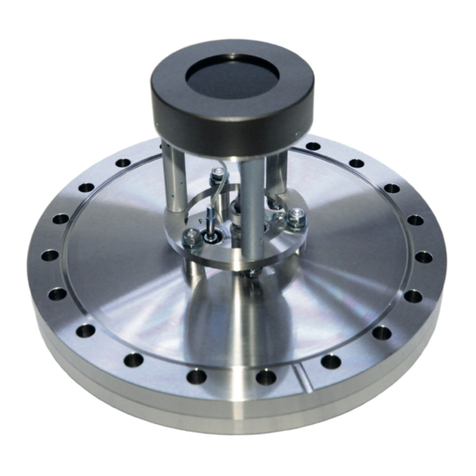
Surface Concept
Surface Concept MCPD40 User manual
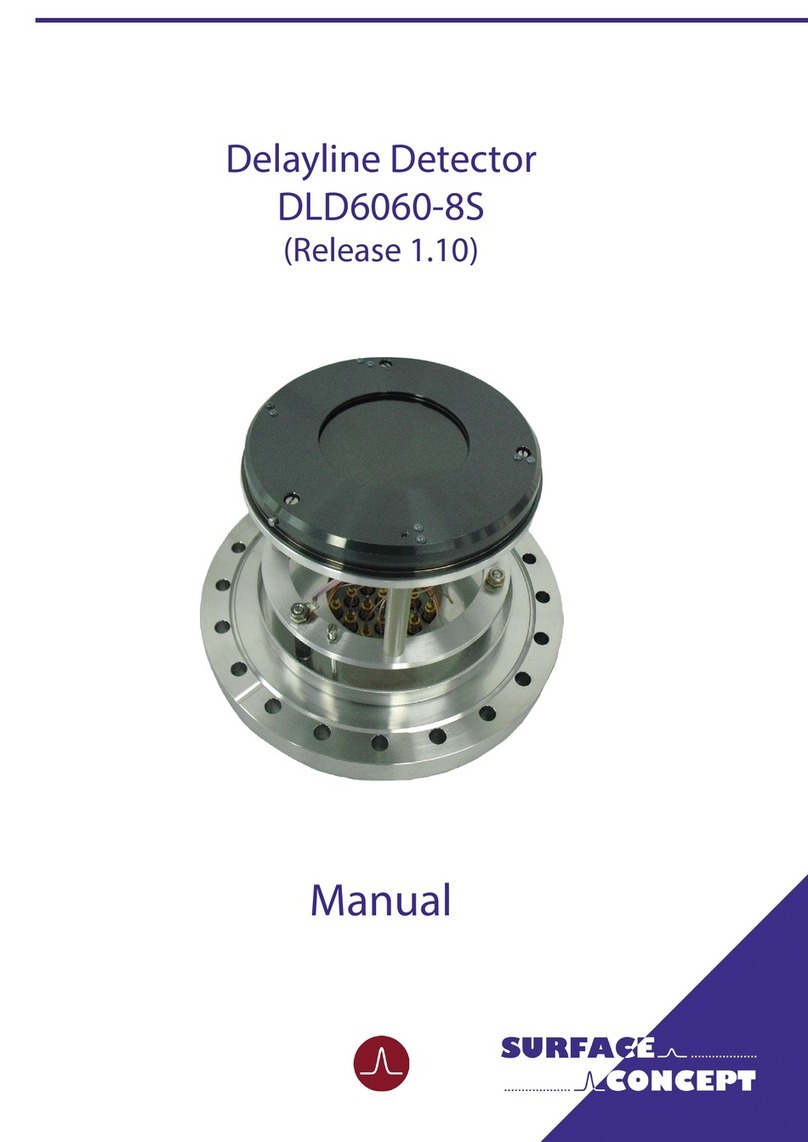
Surface Concept
Surface Concept DLD6060-8S User manual
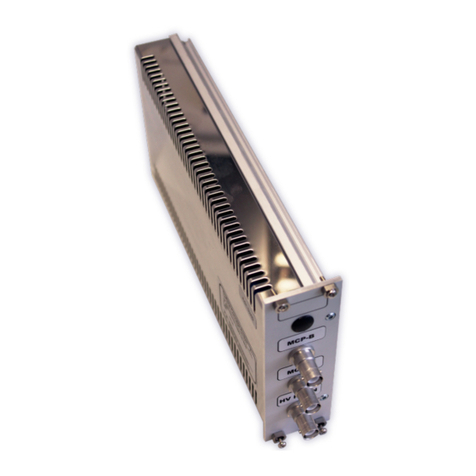
Surface Concept
Surface Concept HVPS User manual
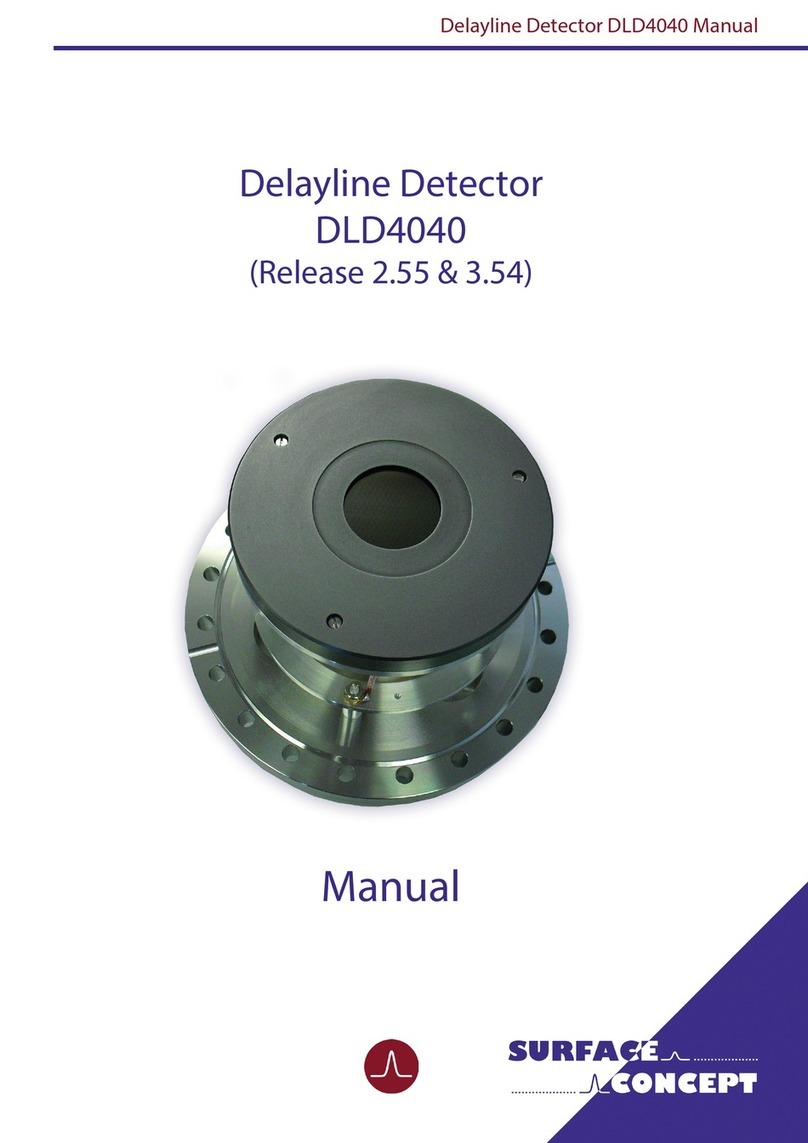
Surface Concept
Surface Concept DLD4040 User manual
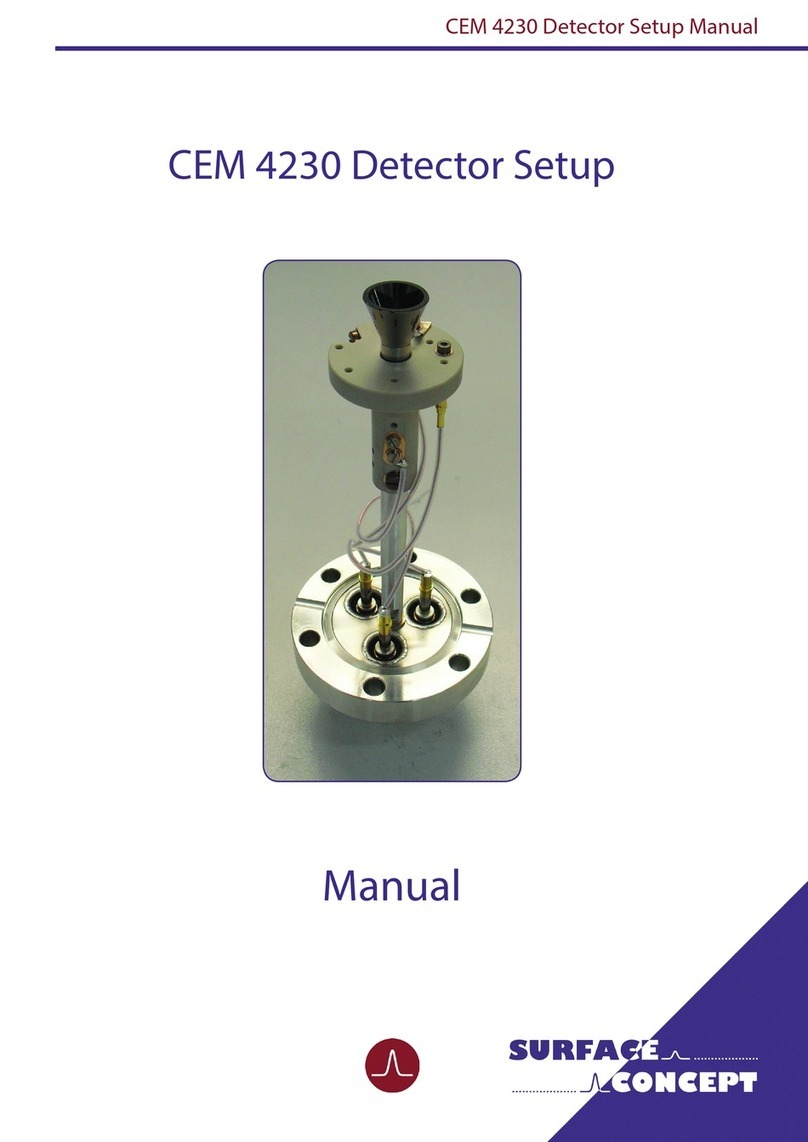
Surface Concept
Surface Concept CEM 4230 User manual
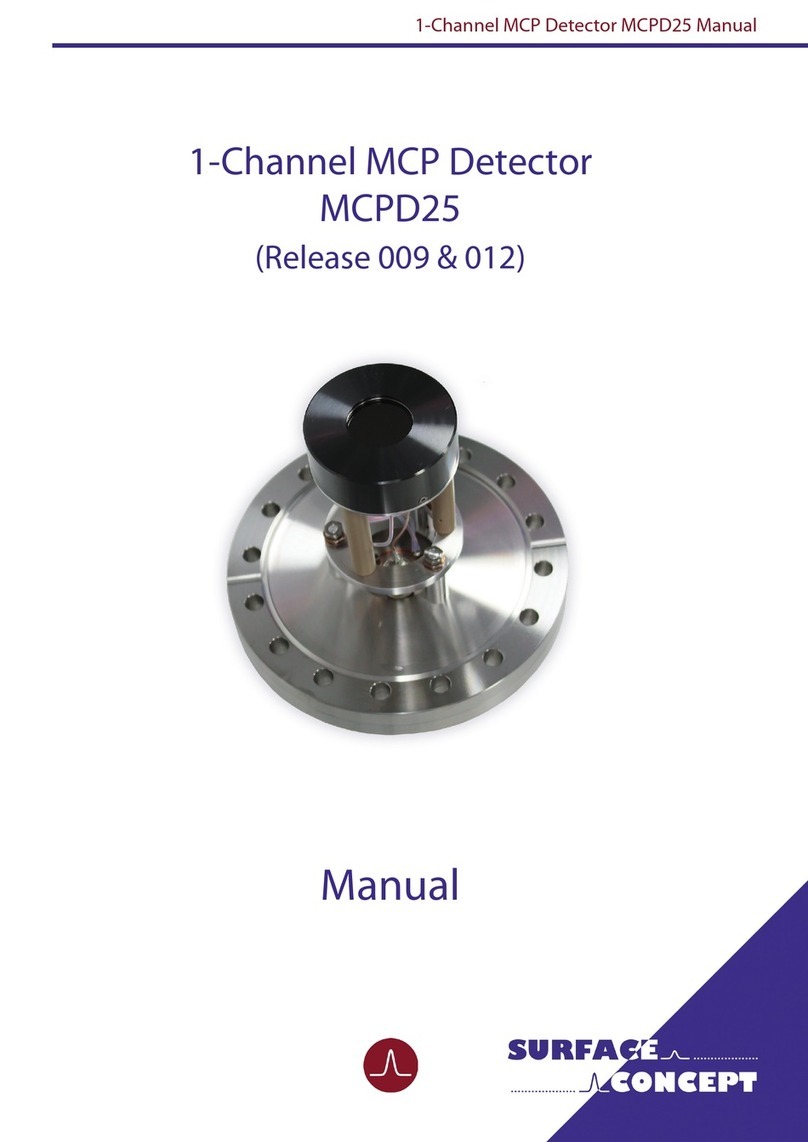
Surface Concept
Surface Concept MCPD25 User manual
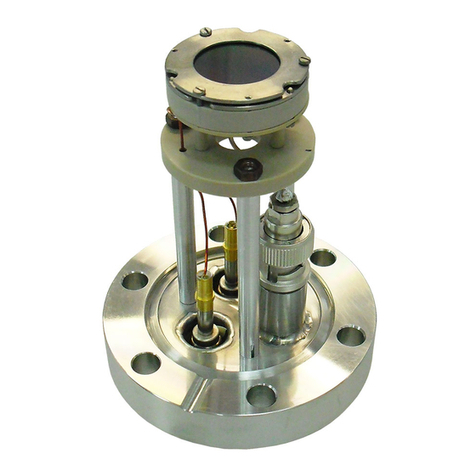
Surface Concept
Surface Concept MCPD18 User manual
